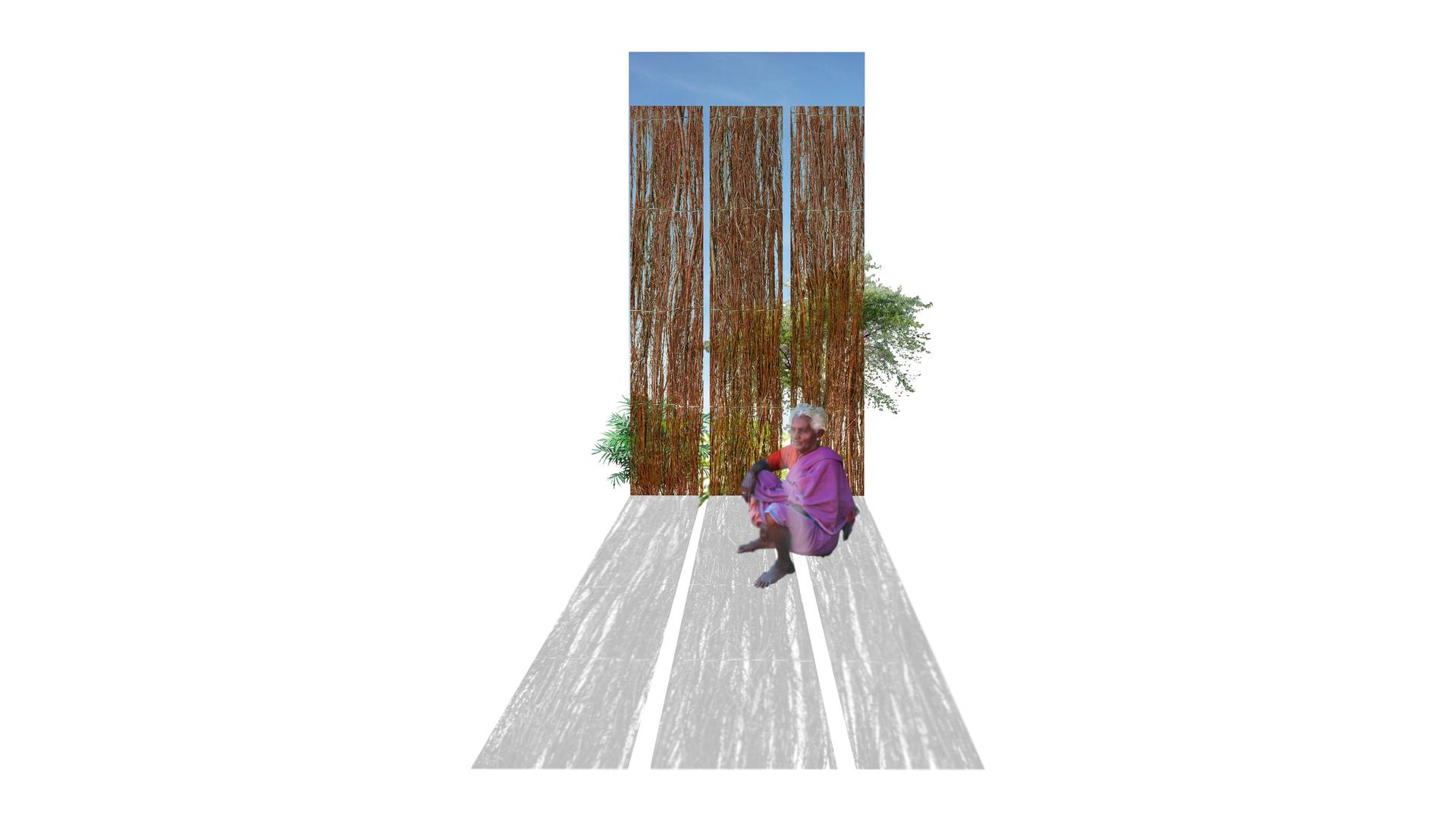Image

Image
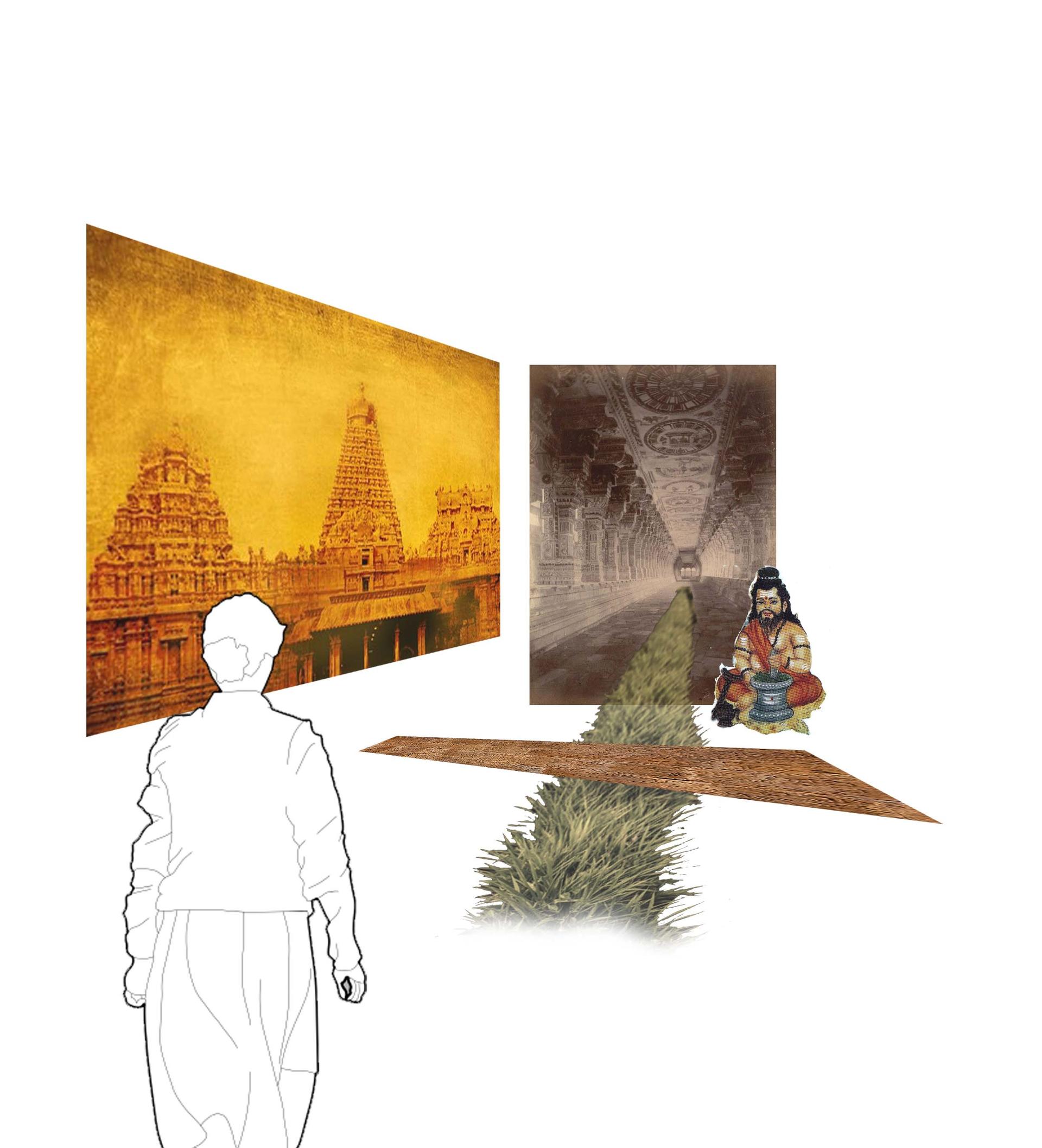
ABSTRACT
Seventy-five percent of India’s population is rural. Of those rural citizens, almost nine out of ten lack access to adequate health facilities. While the existing composition of any village in India is housing, temple, and agriculture, the physical well-being of residents has no home. When the local government builds a new isolated healthcare center, these disconnected centers become deserted and a place of unhealthy activity.
How do you effectively embed a new spatial intervention within an existing system of the village that supports health, rather than extending the boundaries of the village into sprawl? Historical study of medical practice in India establishes a relationship between religion and medicine, where temples had multifaceted roles, housing not only belief but also meeting civic needs Based on this research, a design framework is established that weaves both spiritual and physical wellness. This melding of both makes the intervention viable and responding to the village community.
By mapping the medical desert in the state of Tamil Nadu, a typical village without healthcare access is chosen to demonstrate these ideas. The 11th-century temple in this village has been barricaded from community use in an effort at conservation, but it will be brought to life by meeting the village's health needs.
The design proposes reconnection of the rural temple ground while rethinking the rural healthcare delivery system. This is achieved by blurring the boundaries between sacred and social spaces and revealing historic elements through establishing a strong physical connection from the ancient site to the new program. By reimagining community health center design through the adoption of vernacular techniques and principles of temple architecture, a subterranean health center becomes a viable option to resolve issues with the preservation of the temple complex. In total, the design concept offers primary holistic wellness for a remote village through the integration of functional and symbolic layers.
MEDICAL DESERT MAPPING
Image
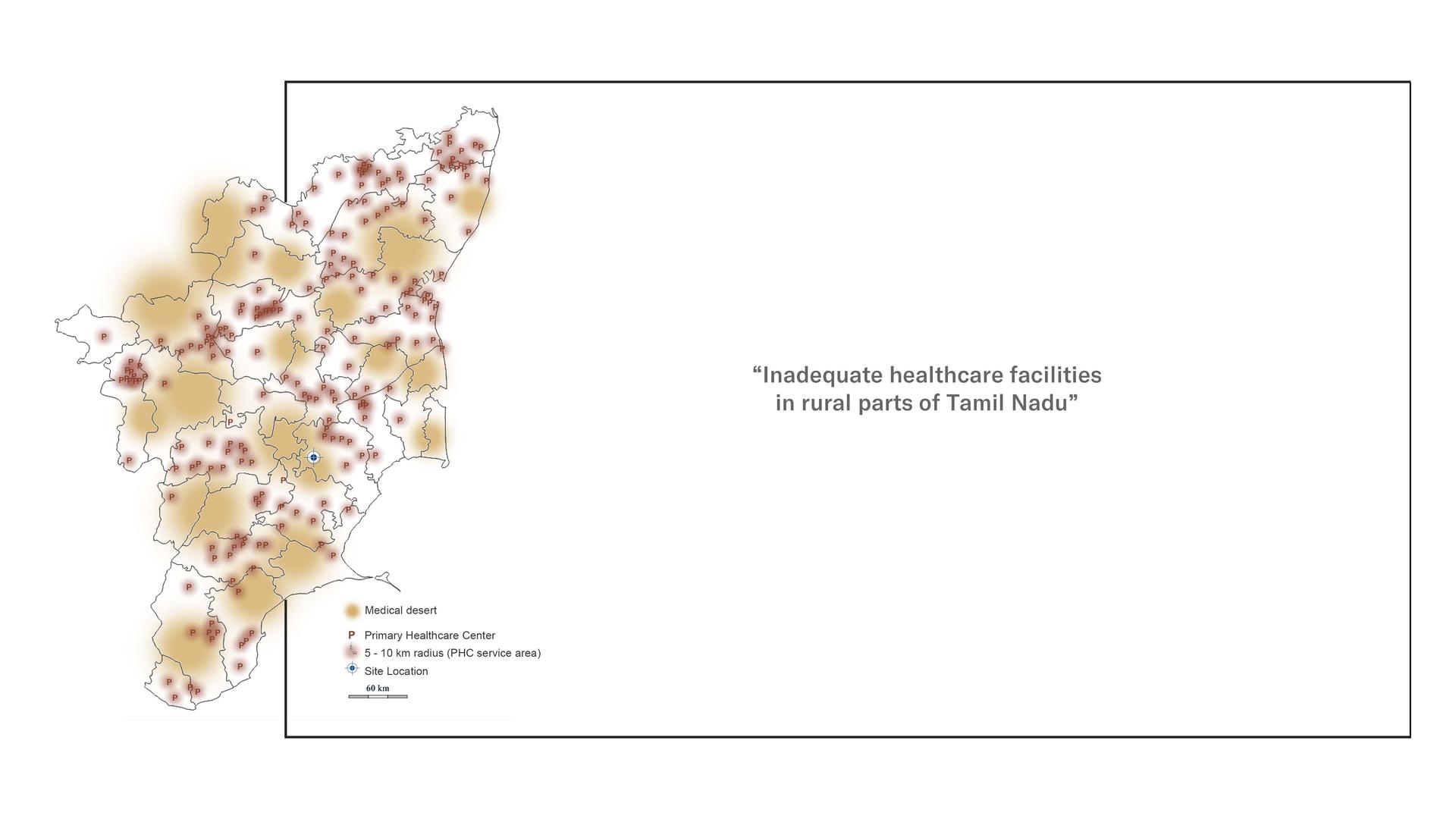
EXISTING VILLAGE TERRAIN
Image
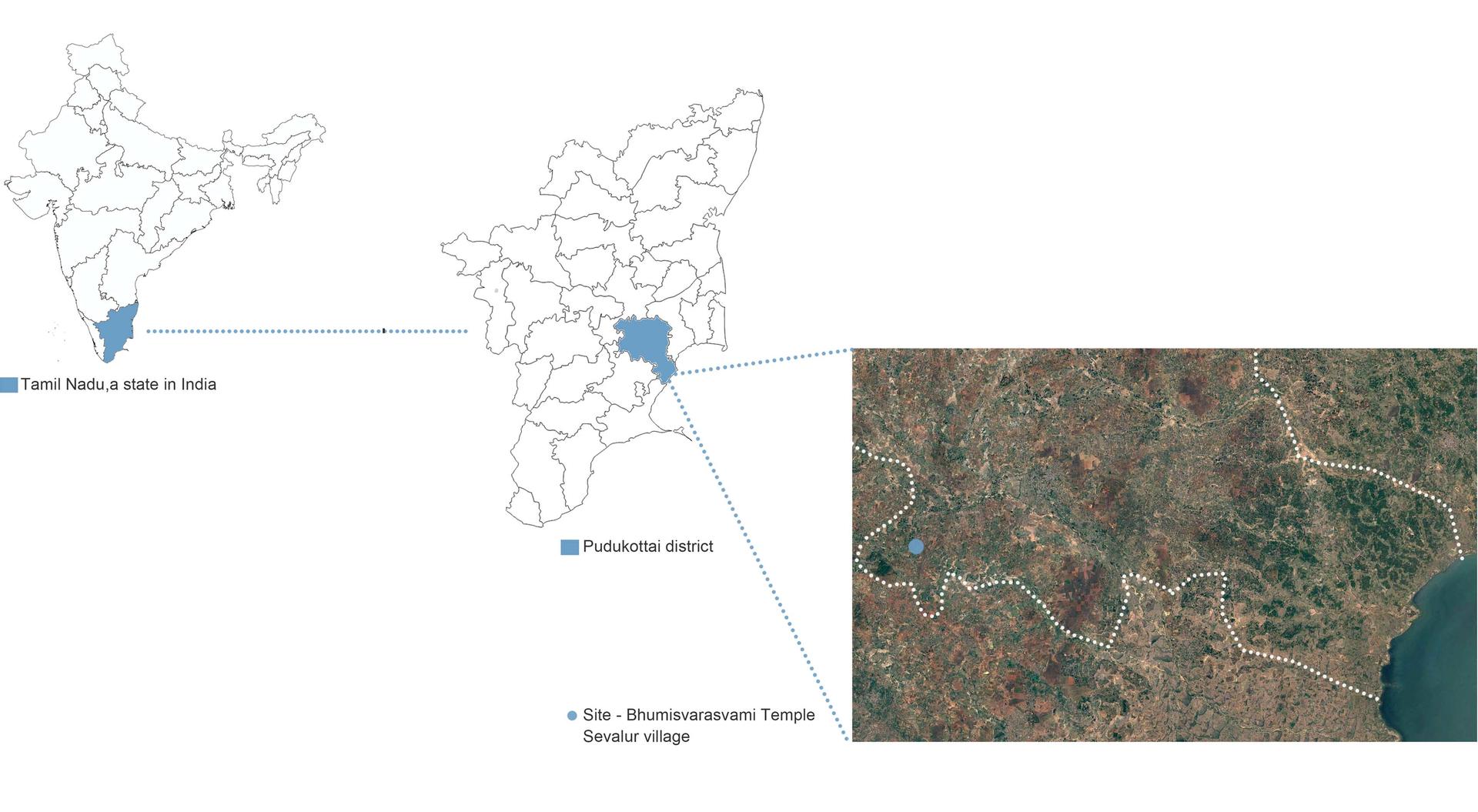
Image
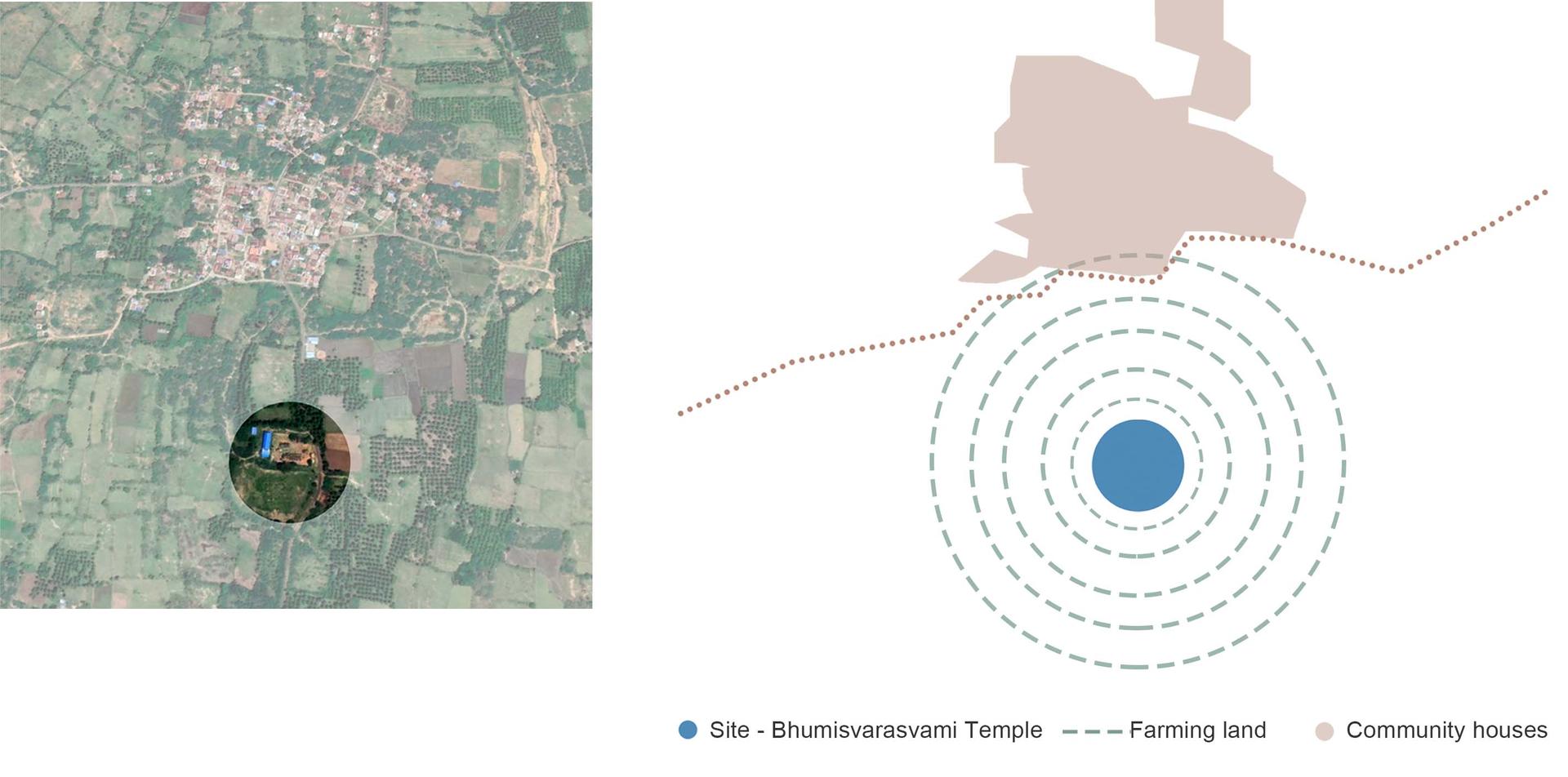
▲ The site is located in Sevalur which is a village in the state of Tamil Nadu in the South of India. This region is a flatland that has a hot-humid climate throughout the year.
The temple site is located amidst the agricultural lands, which has always been the roots of any settlement in India. While the houses are on the other side of the farmland. Occupation and God are always interrelated in the beliefs of the people.
“In order to achieve healthy rural living, it is important to address their social, physical, and mental wellness requirement.”
The basic need of the people.
THE PROPOSAL - Reimagining Bhumisvarasvami Temple
Existing village composition
Image
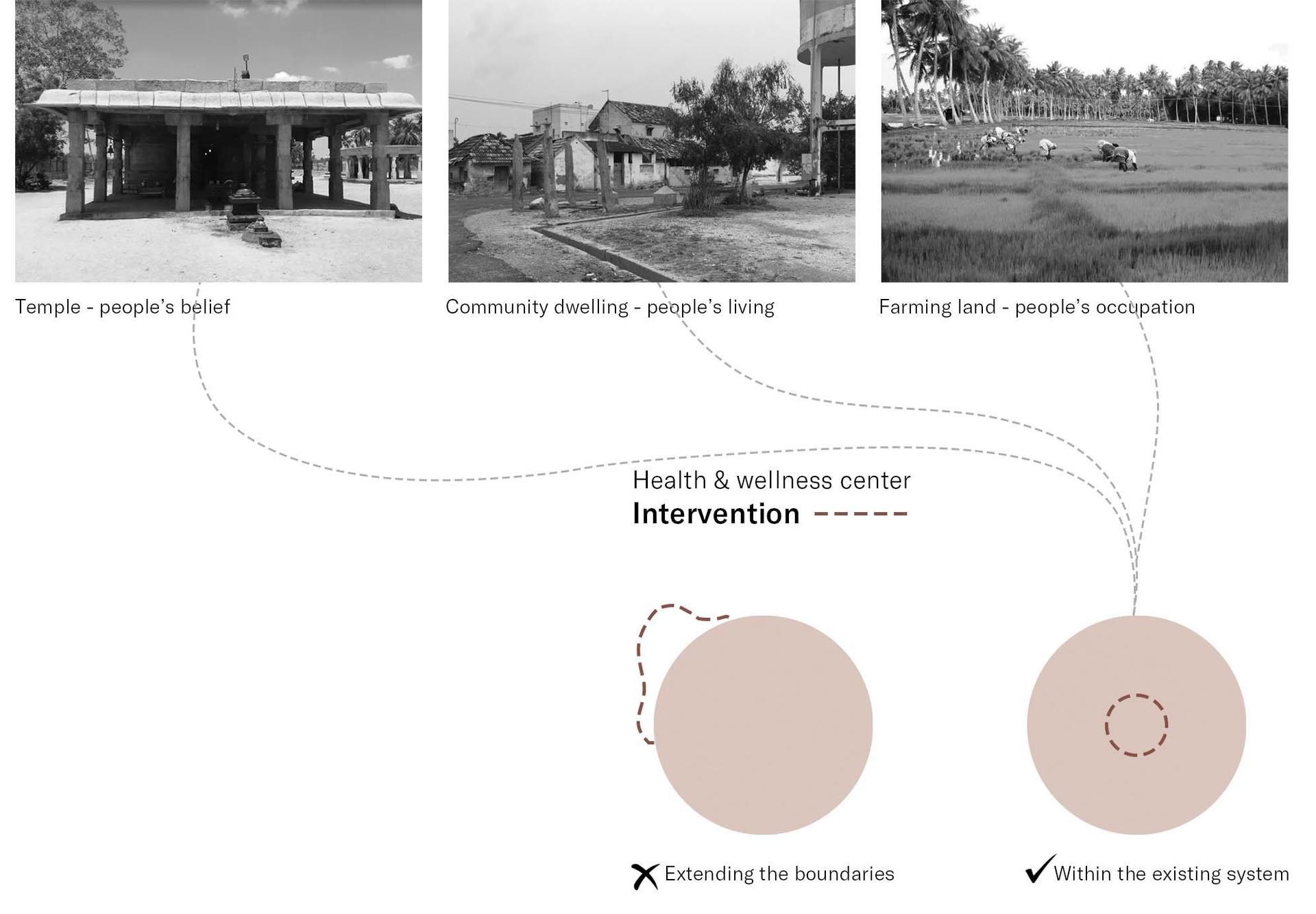
Image
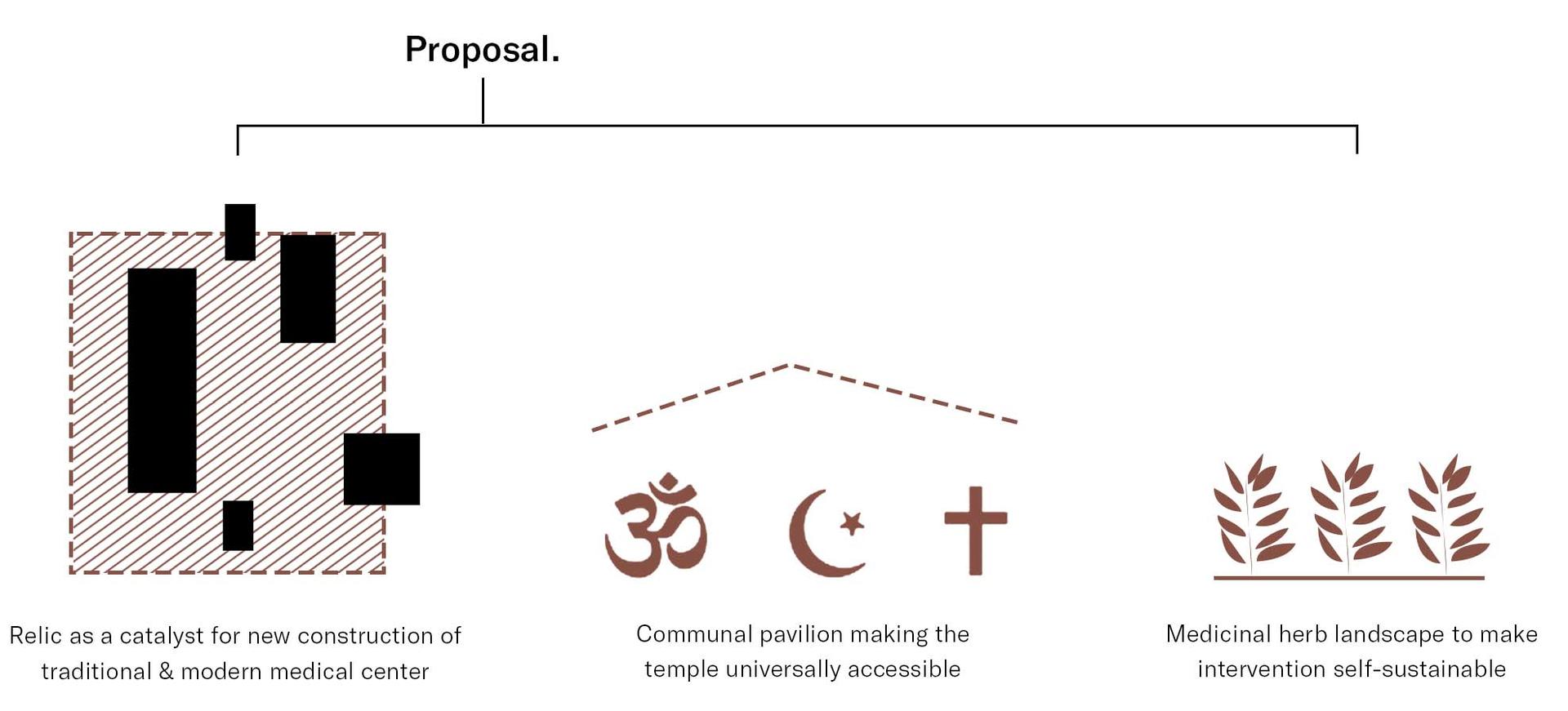
THE BHUMISVARASVAMI TEMPLE
The Bhumisvarasami temple was built during the Chola dynasty (CE 900–1150) that contributed to overhanging cornices, façades, and, more significantly multi-tiered stone masonry structures.
In the recent past, this temple has been barricaded from active use by the people in the attempt of conservation by the Archeological Survey of India.
Image

WOVEN HEALING
Since ancient times, beyond being a place of belief temple has also accommodated the social needs of the community.
The design proposes reconnection of the rural temple ground while rethinking the rural healthcare delivery system. In total, the design concept offers primary holistic wellness for a remote village through the integration of functional and symbolic layers.
Image
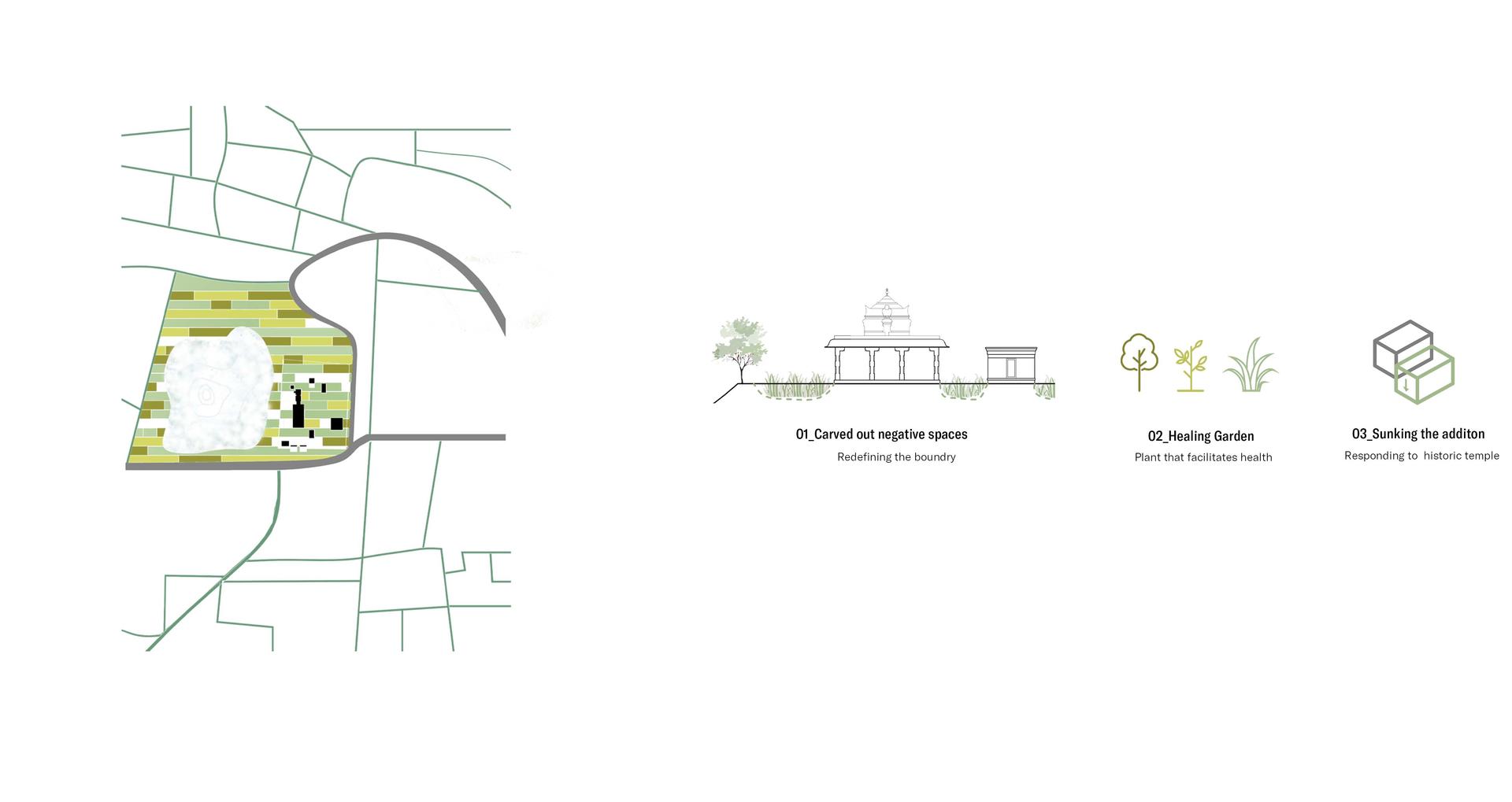
Image
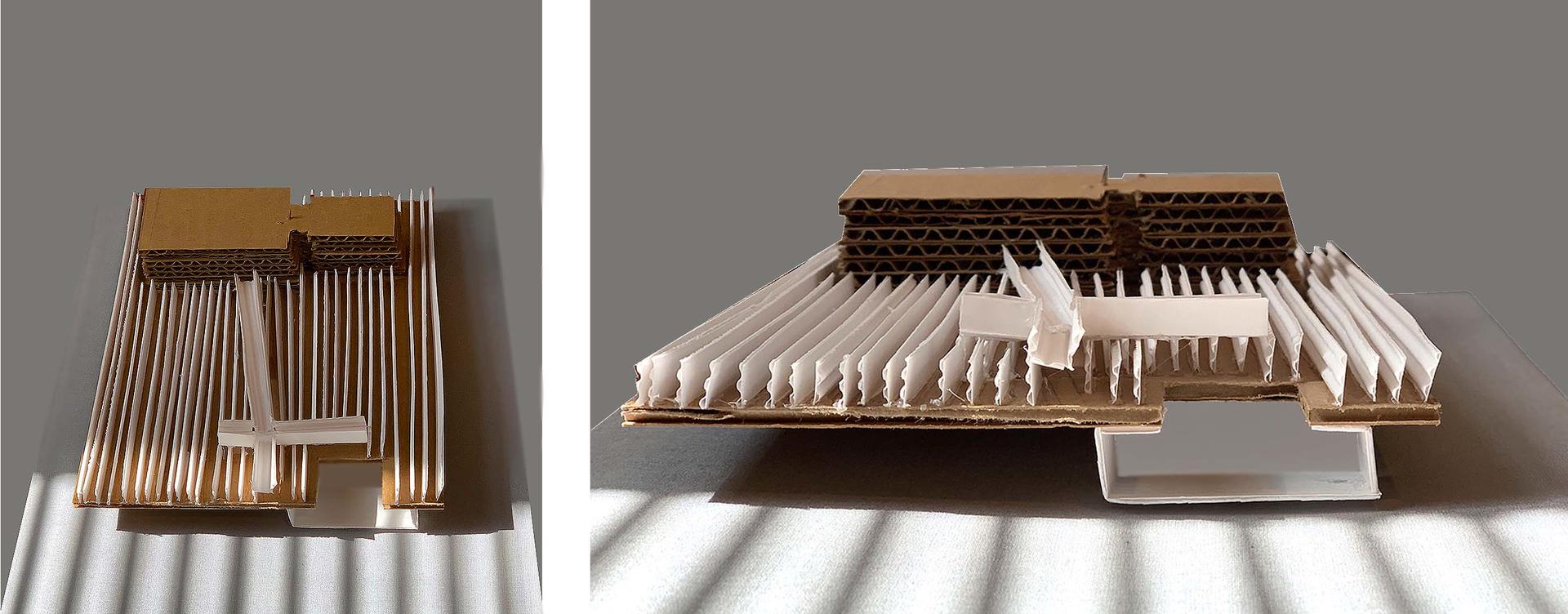
Image
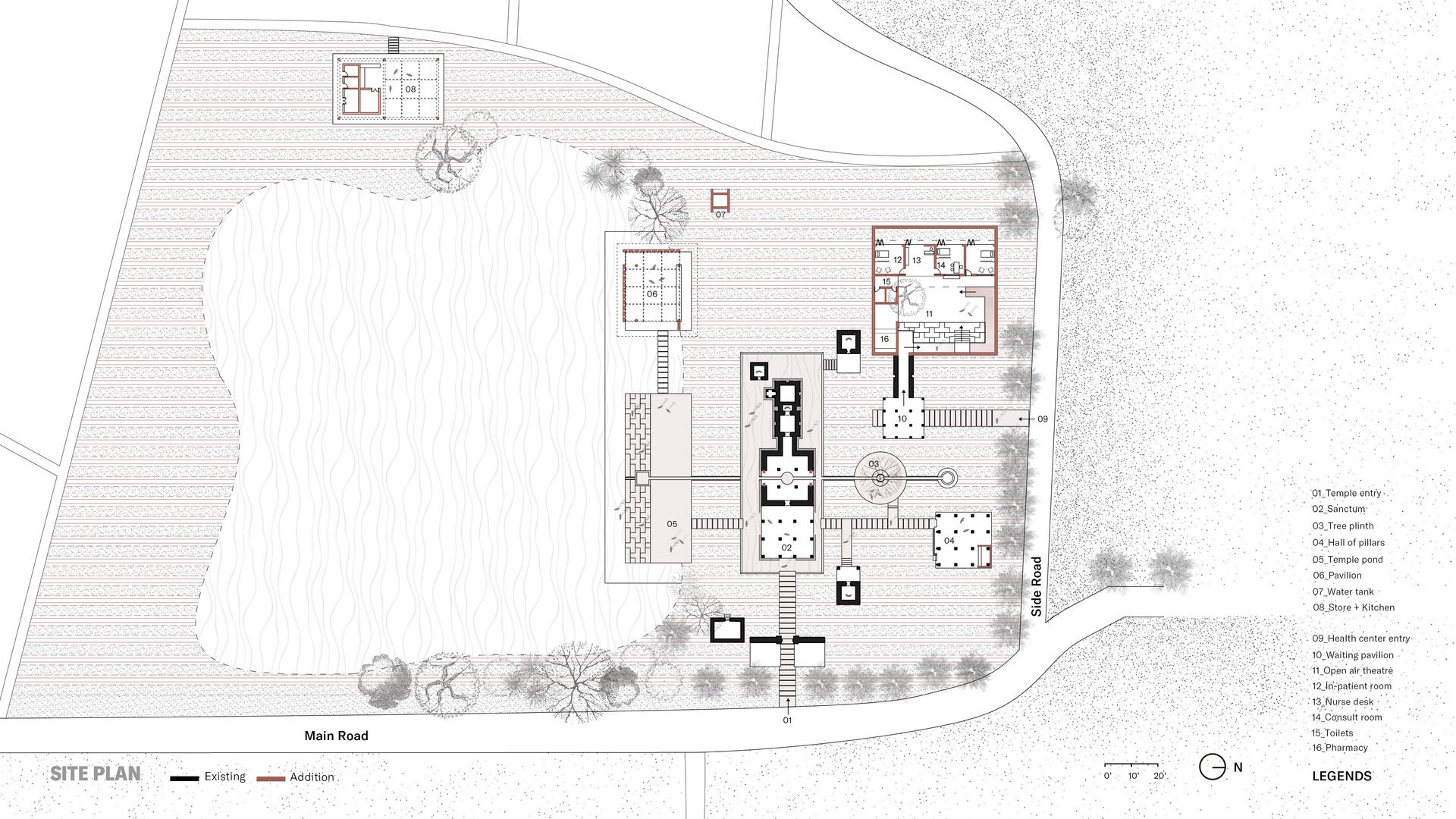
Image
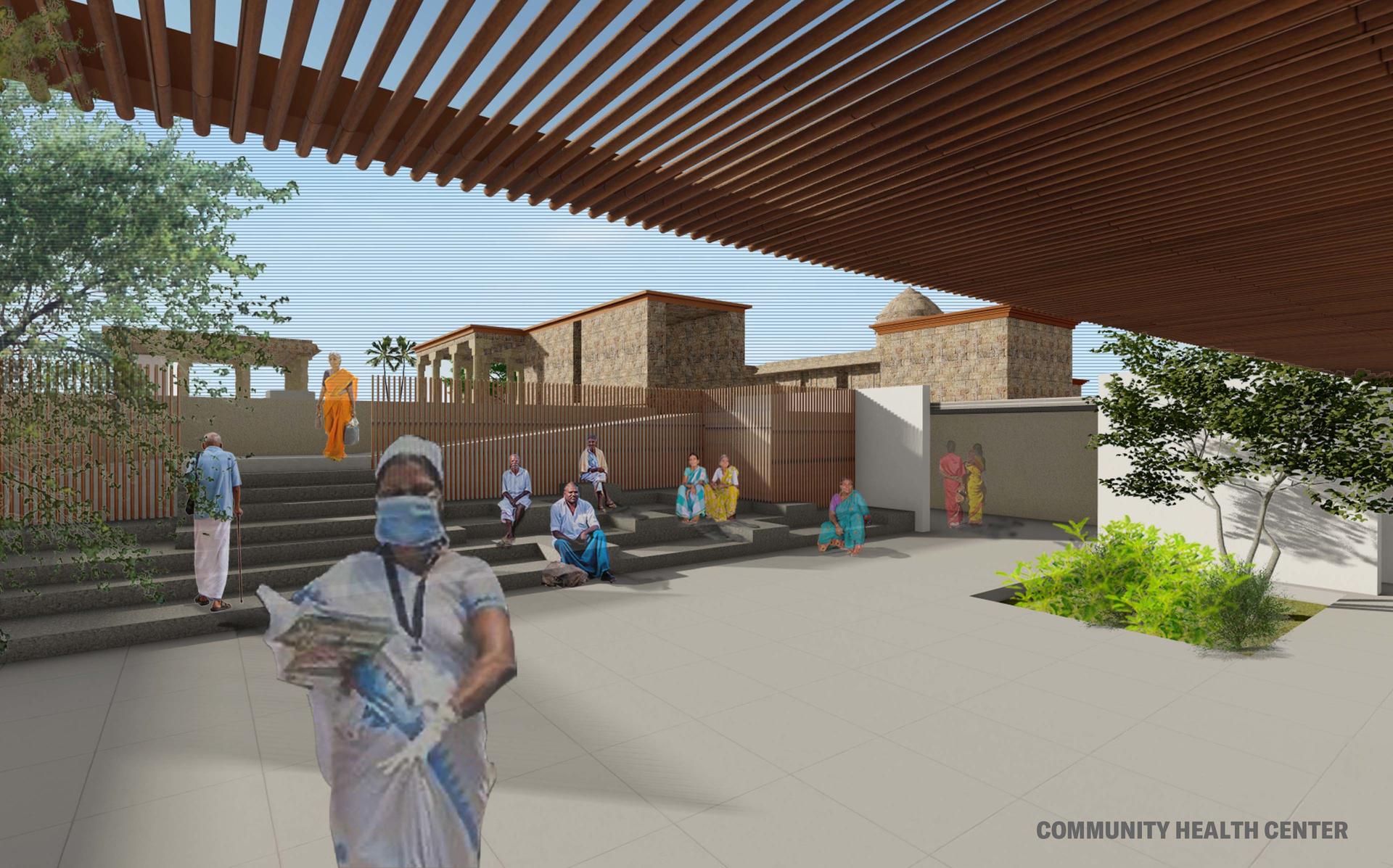
Image
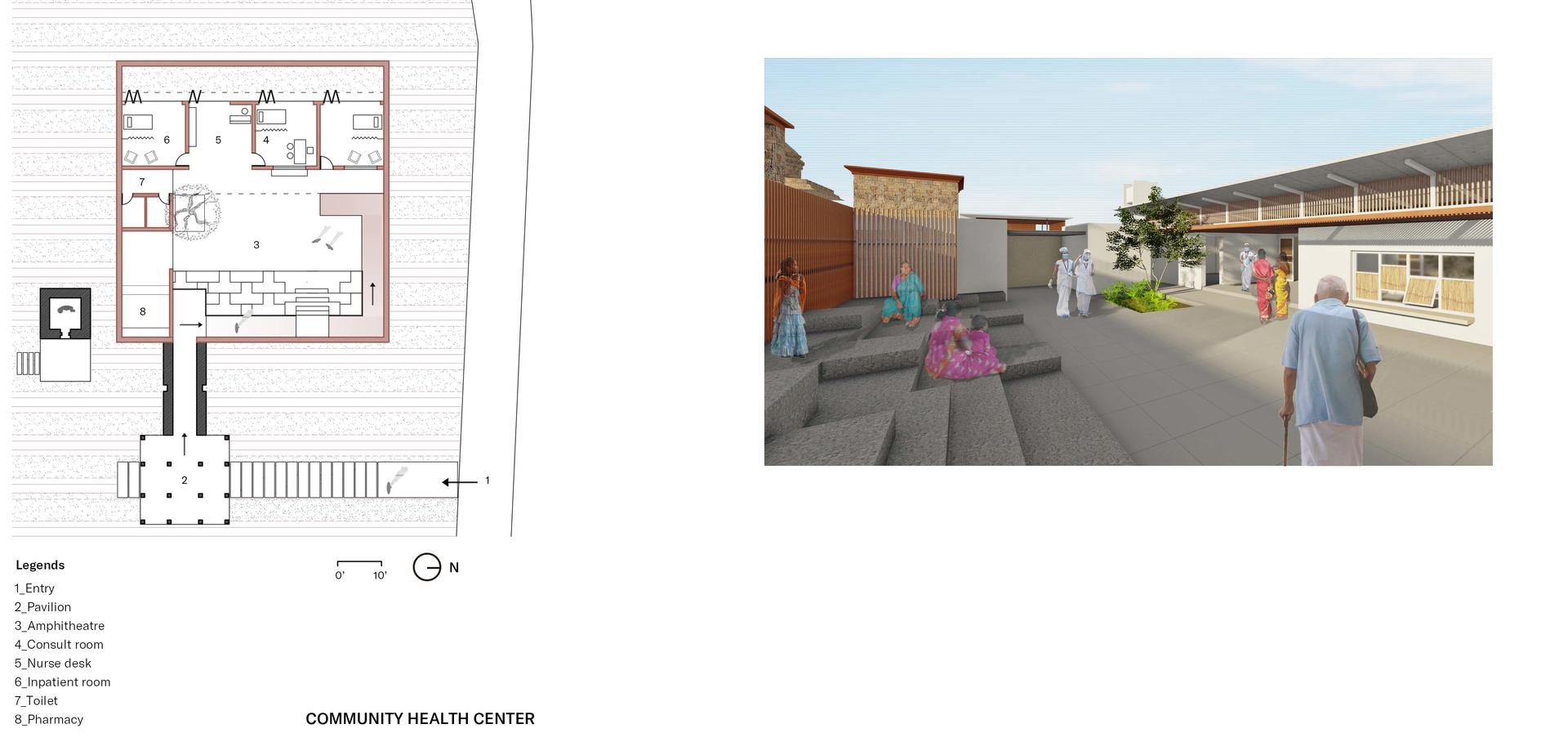
Image
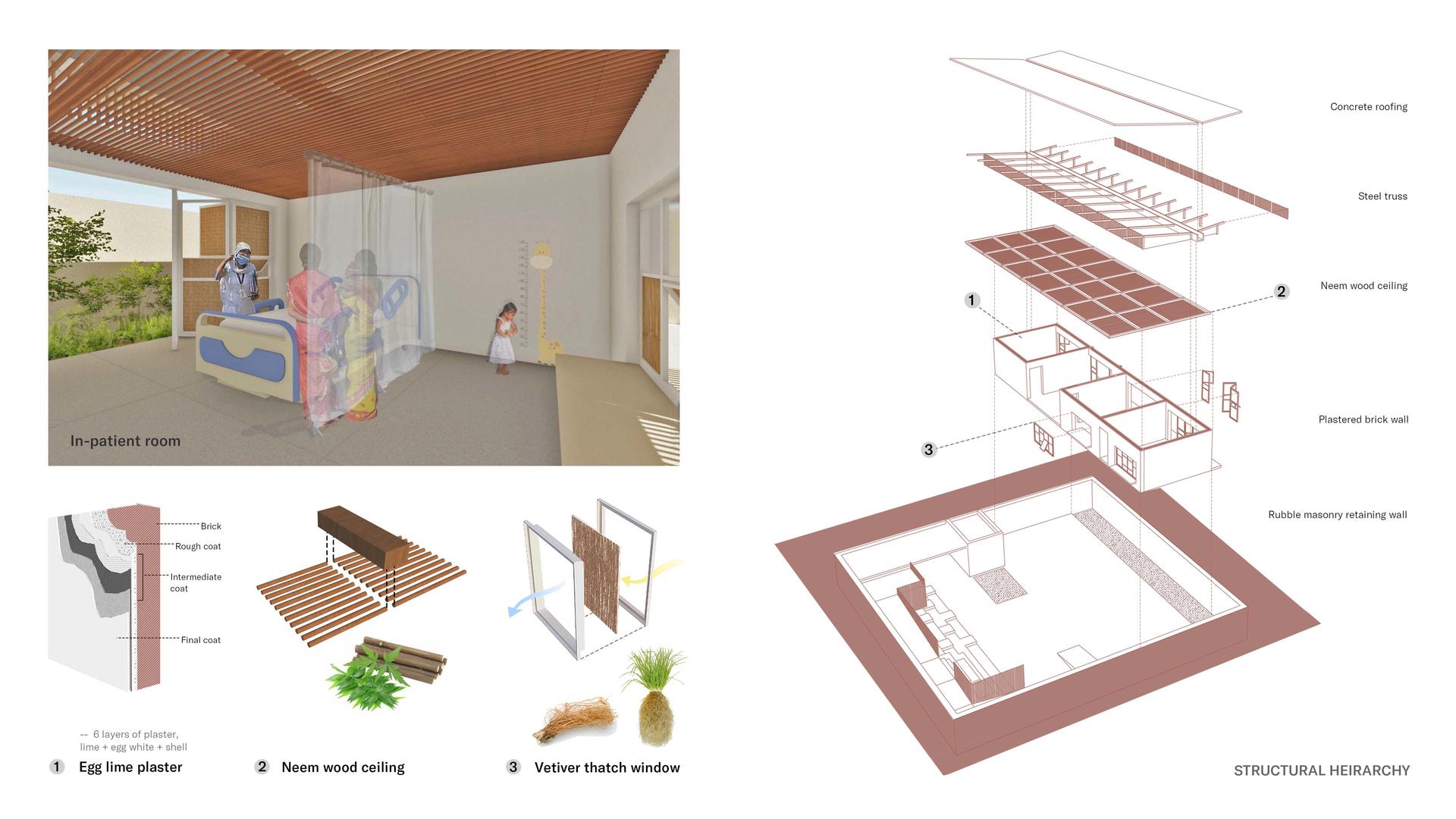
Image

Image
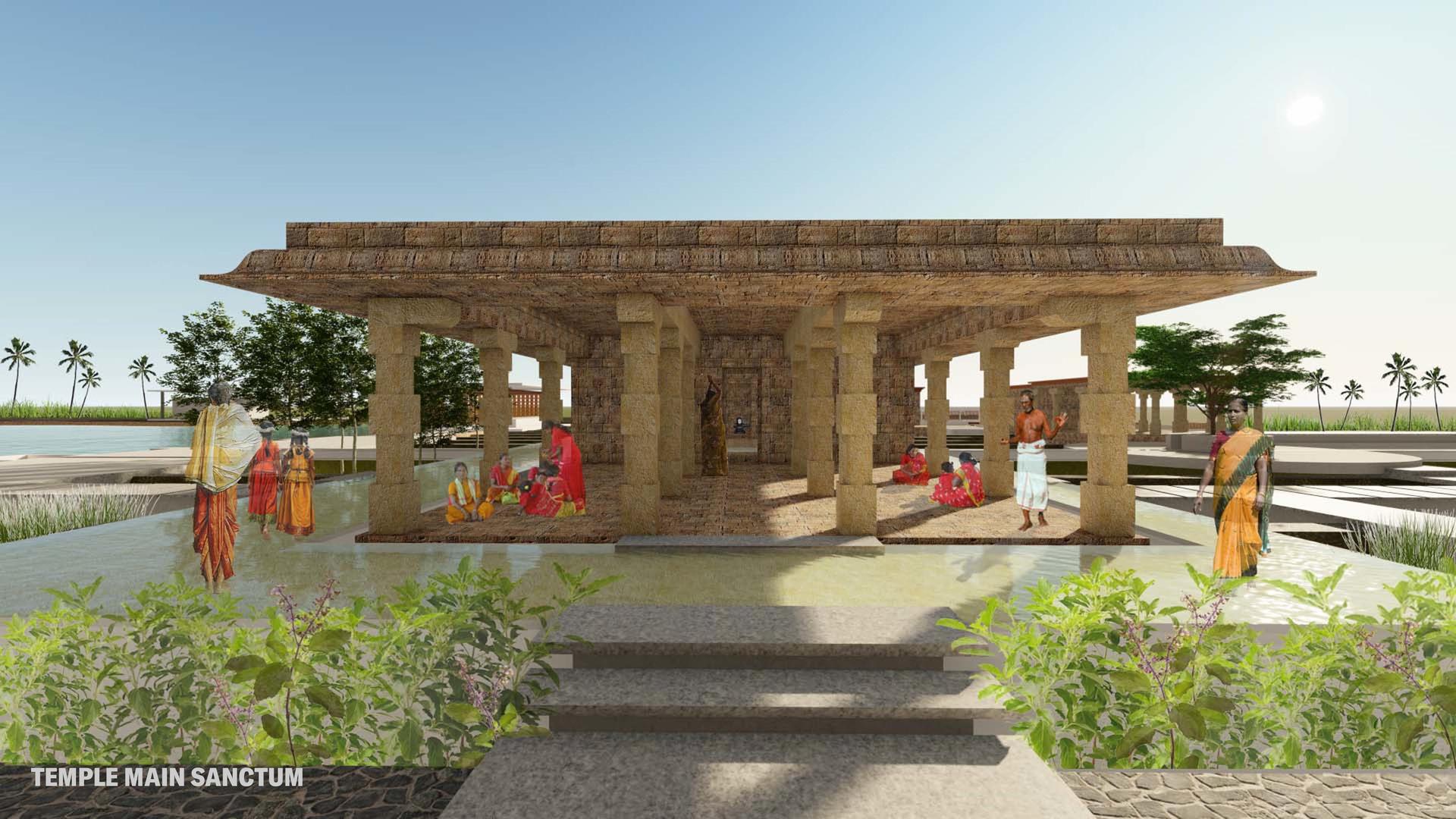
Image

Image
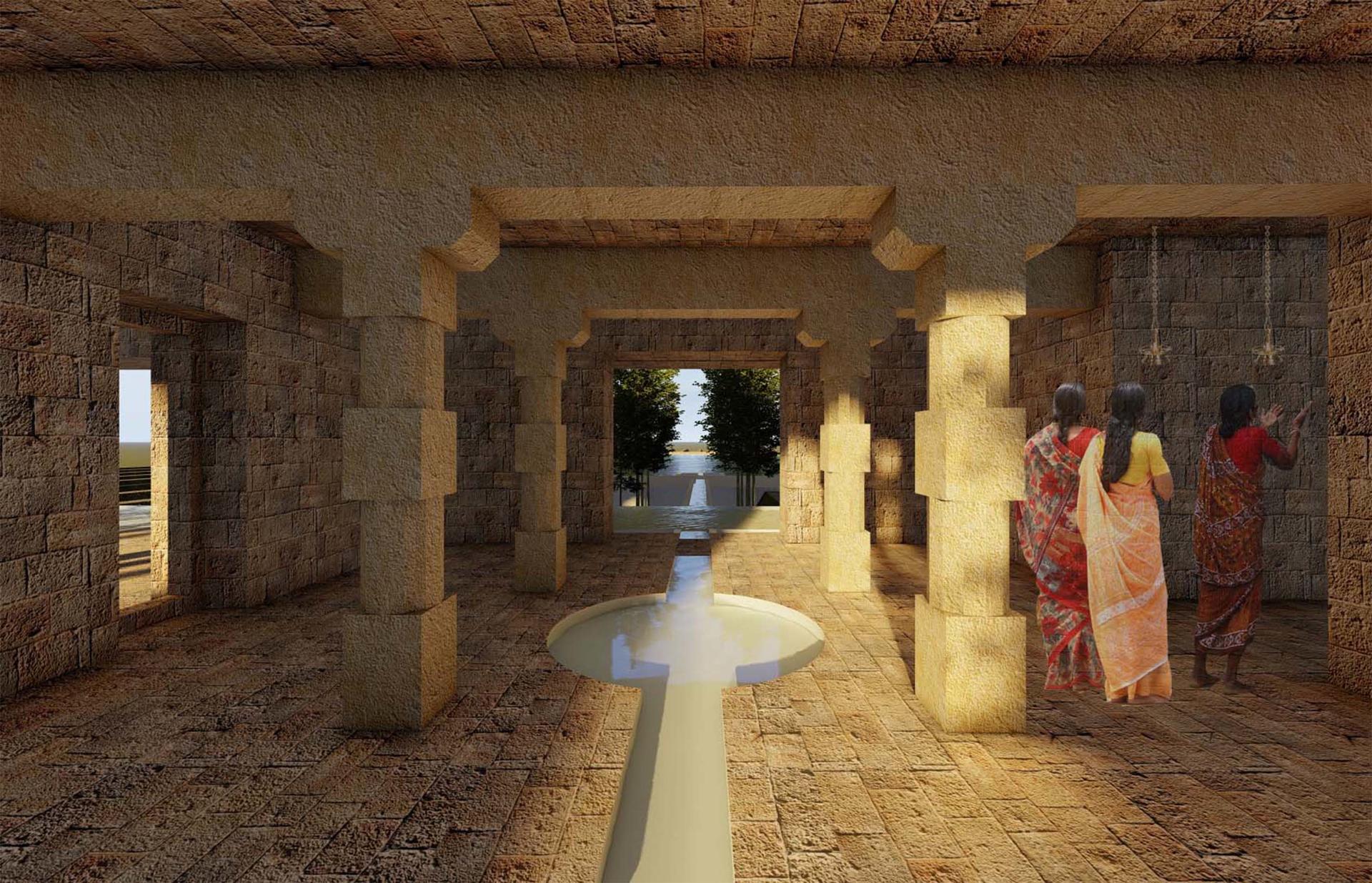
Image
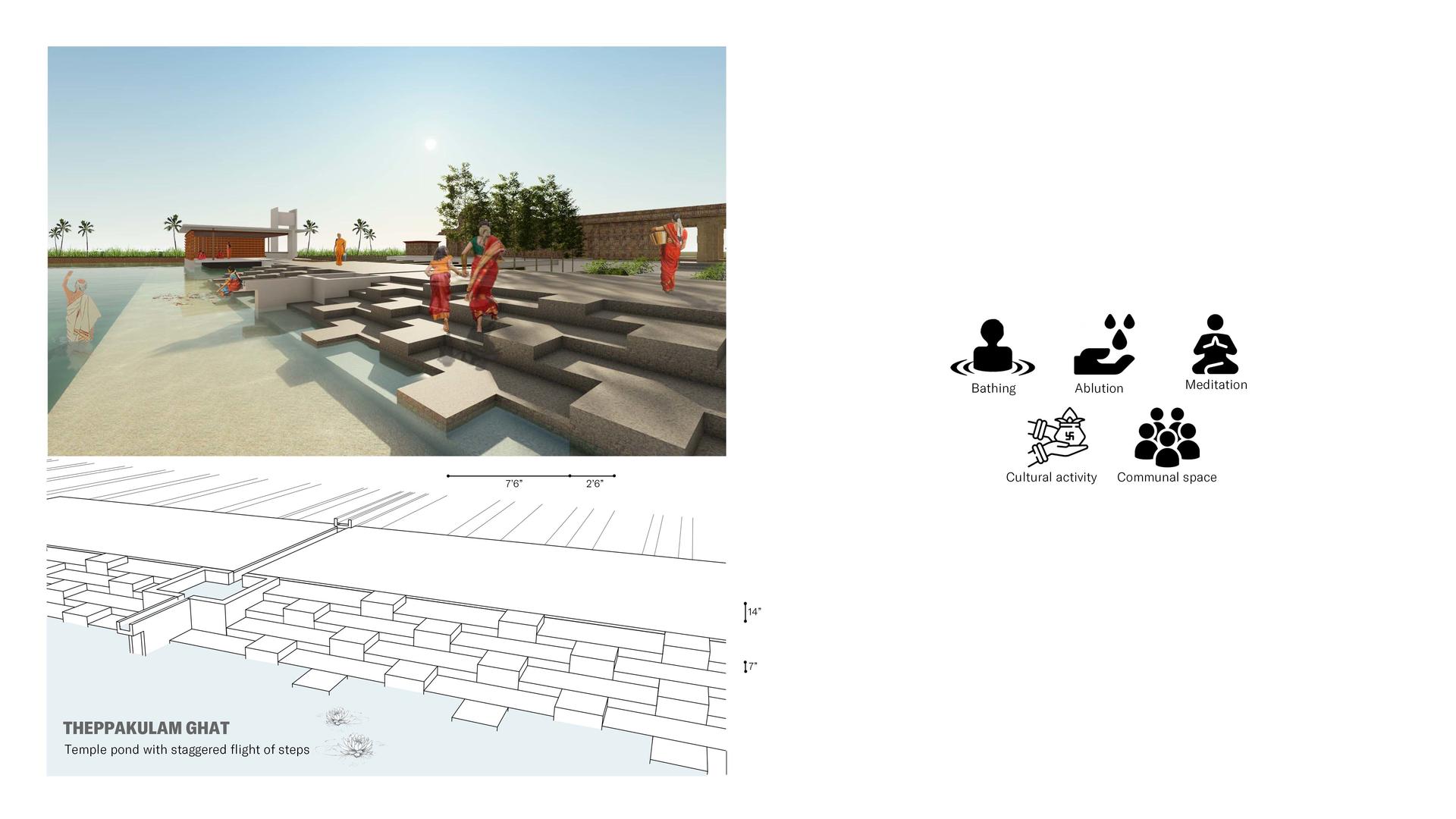
Image
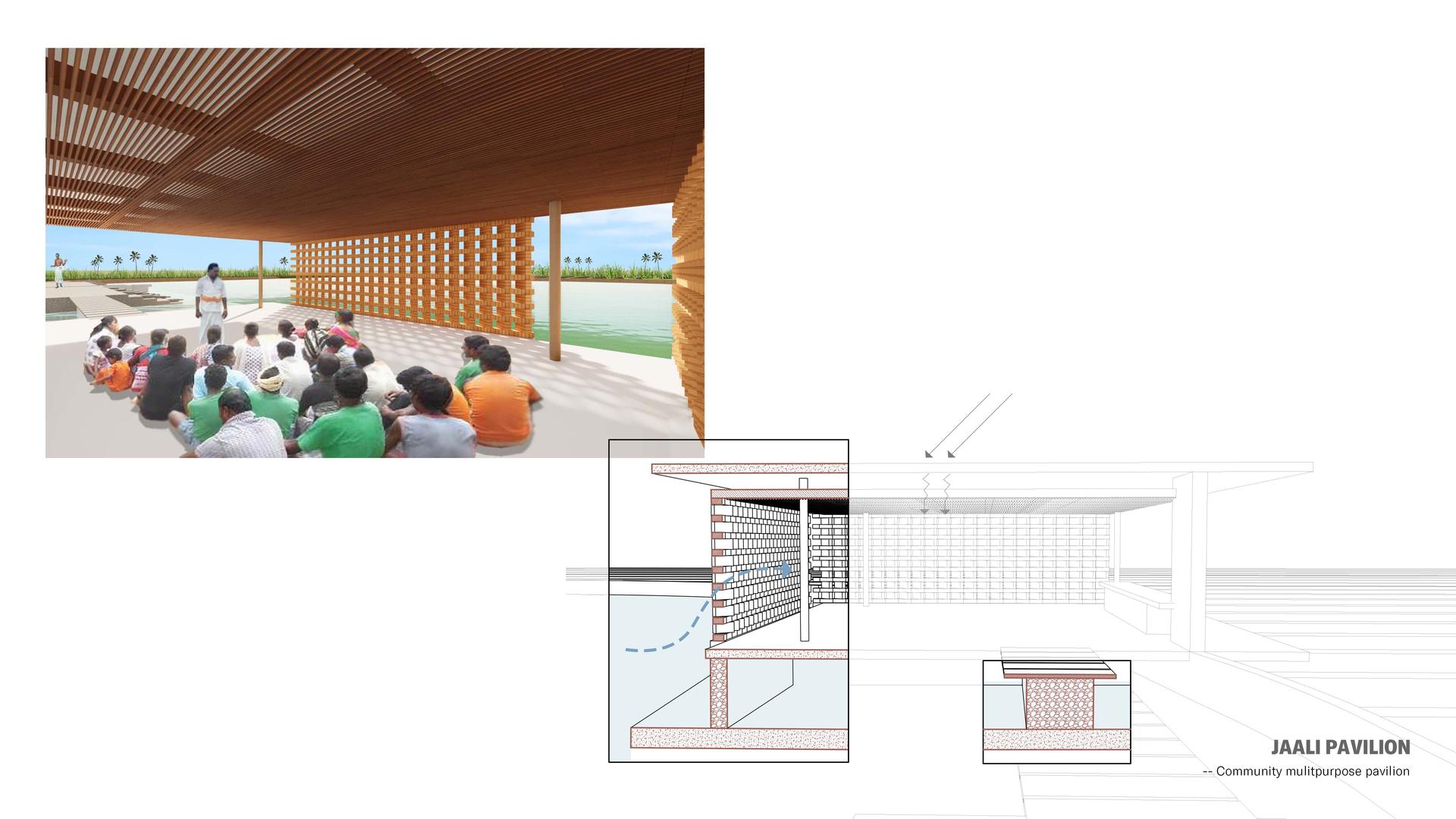
Image
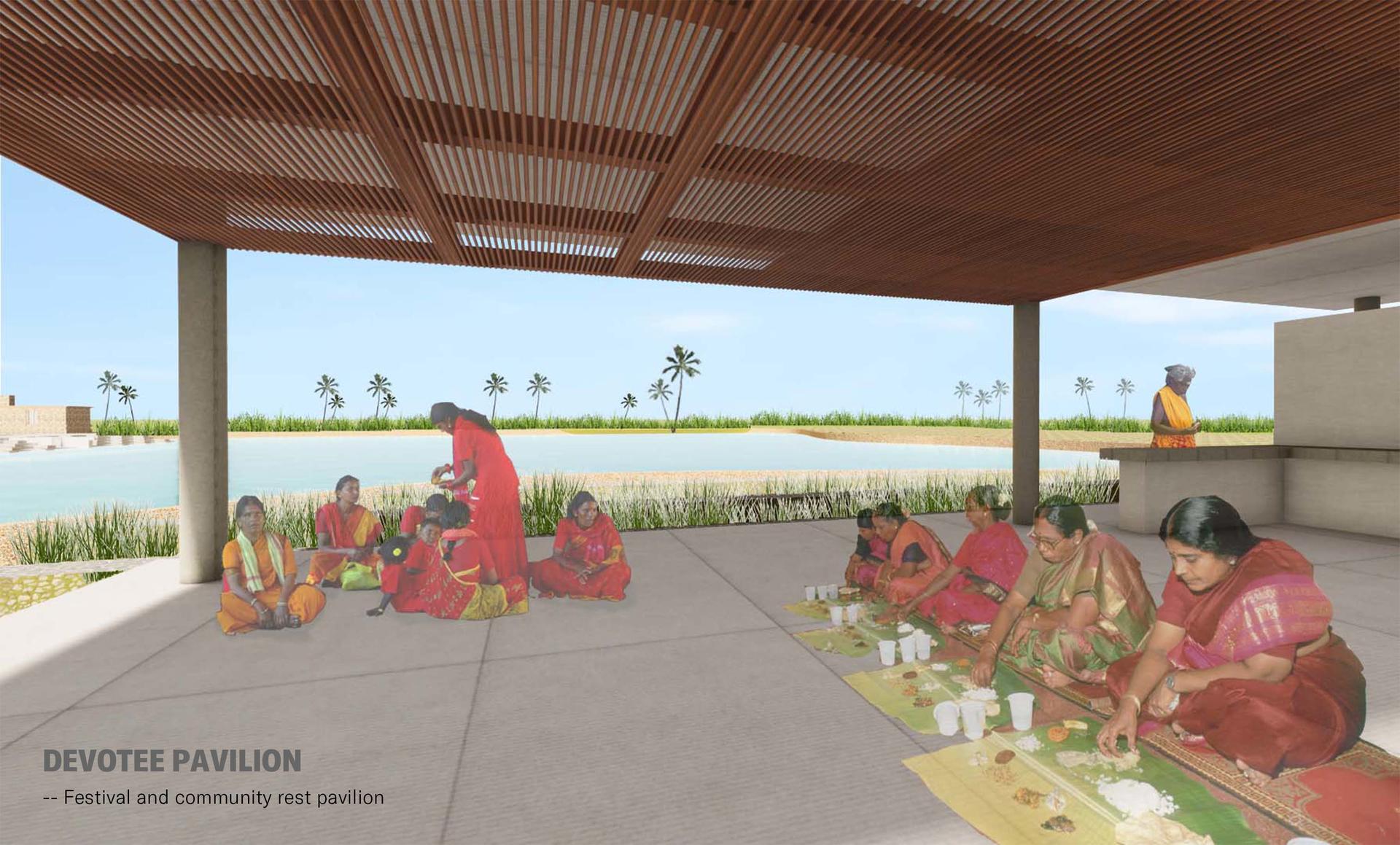
Image
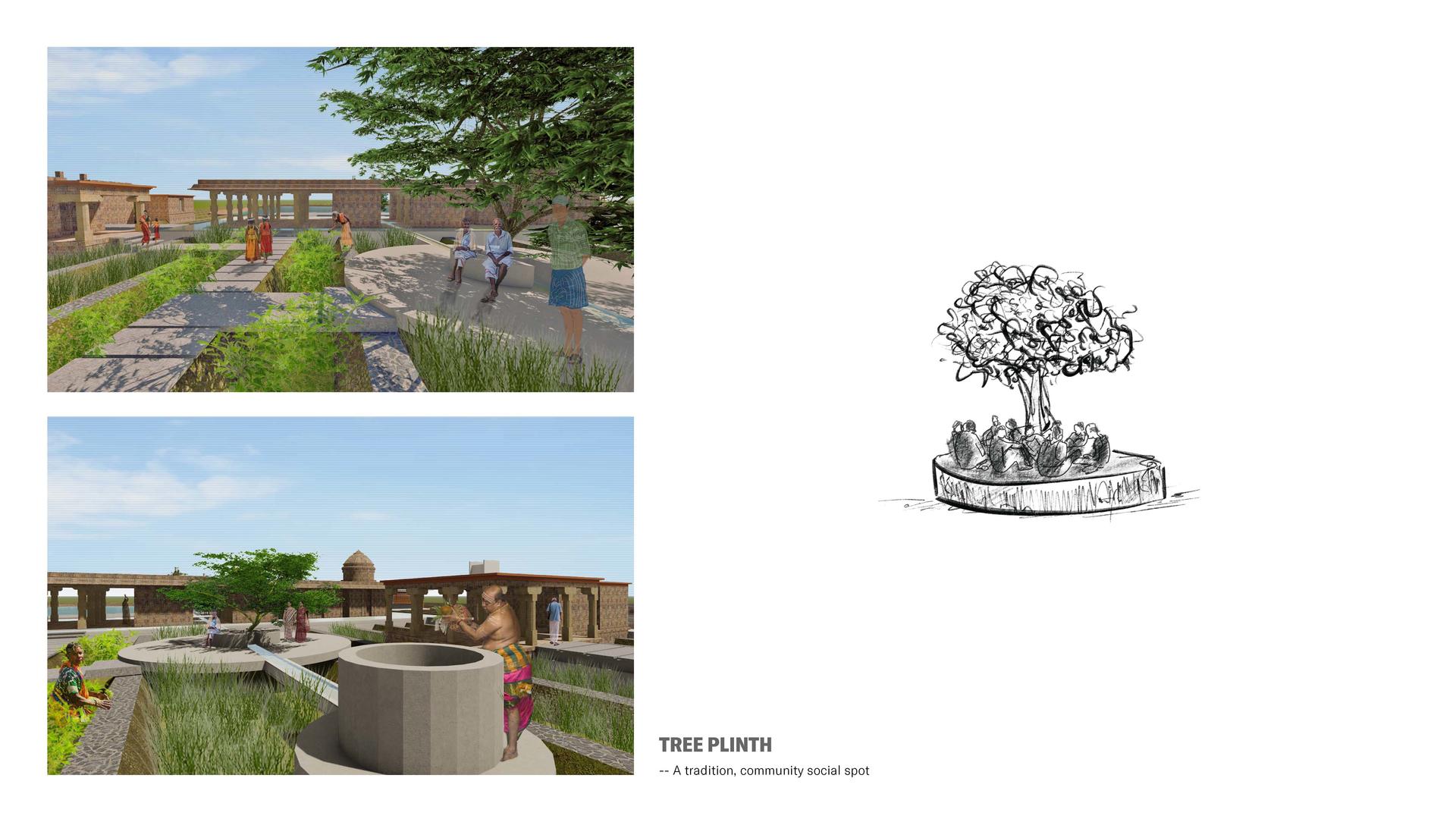
Image
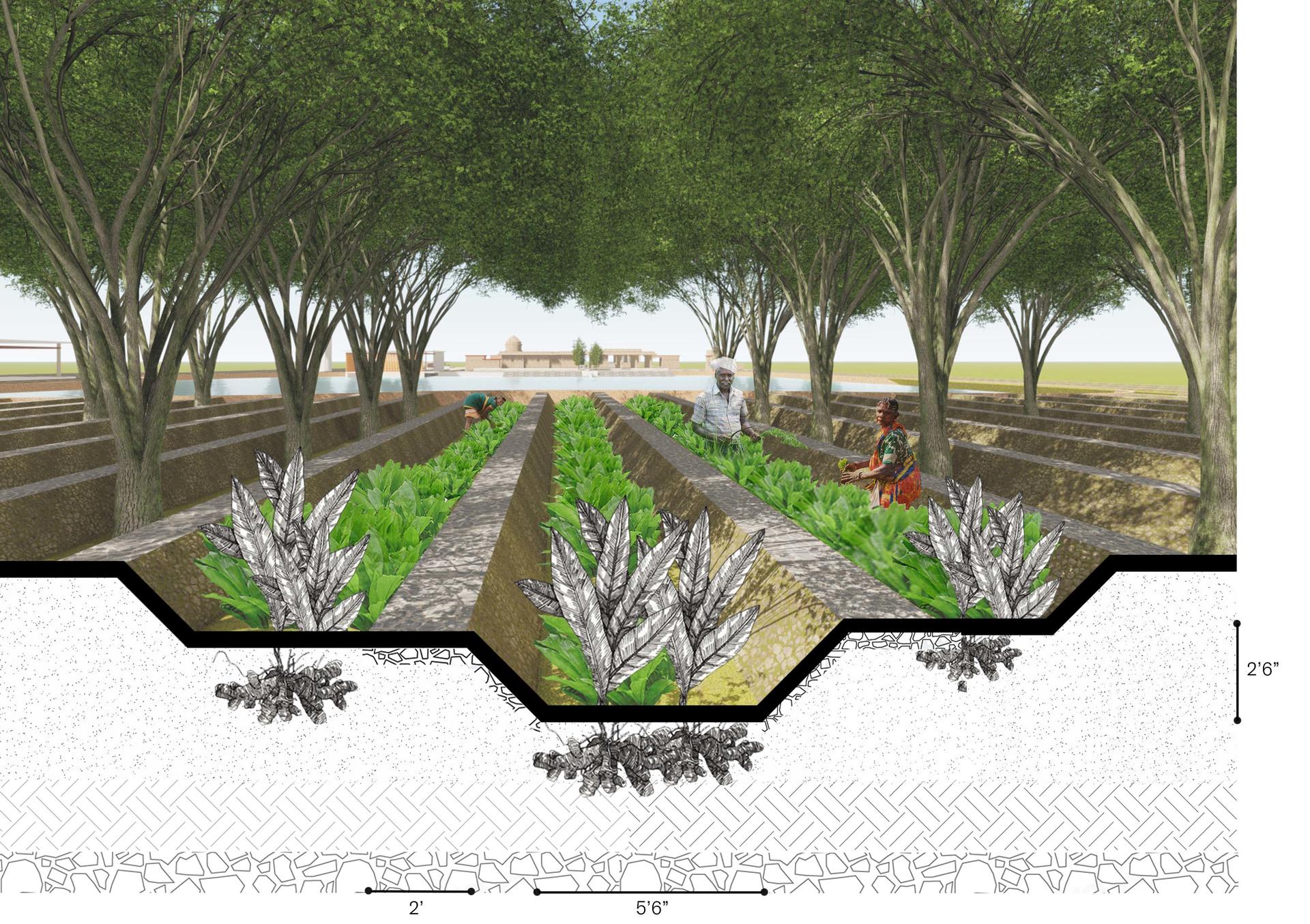
Image
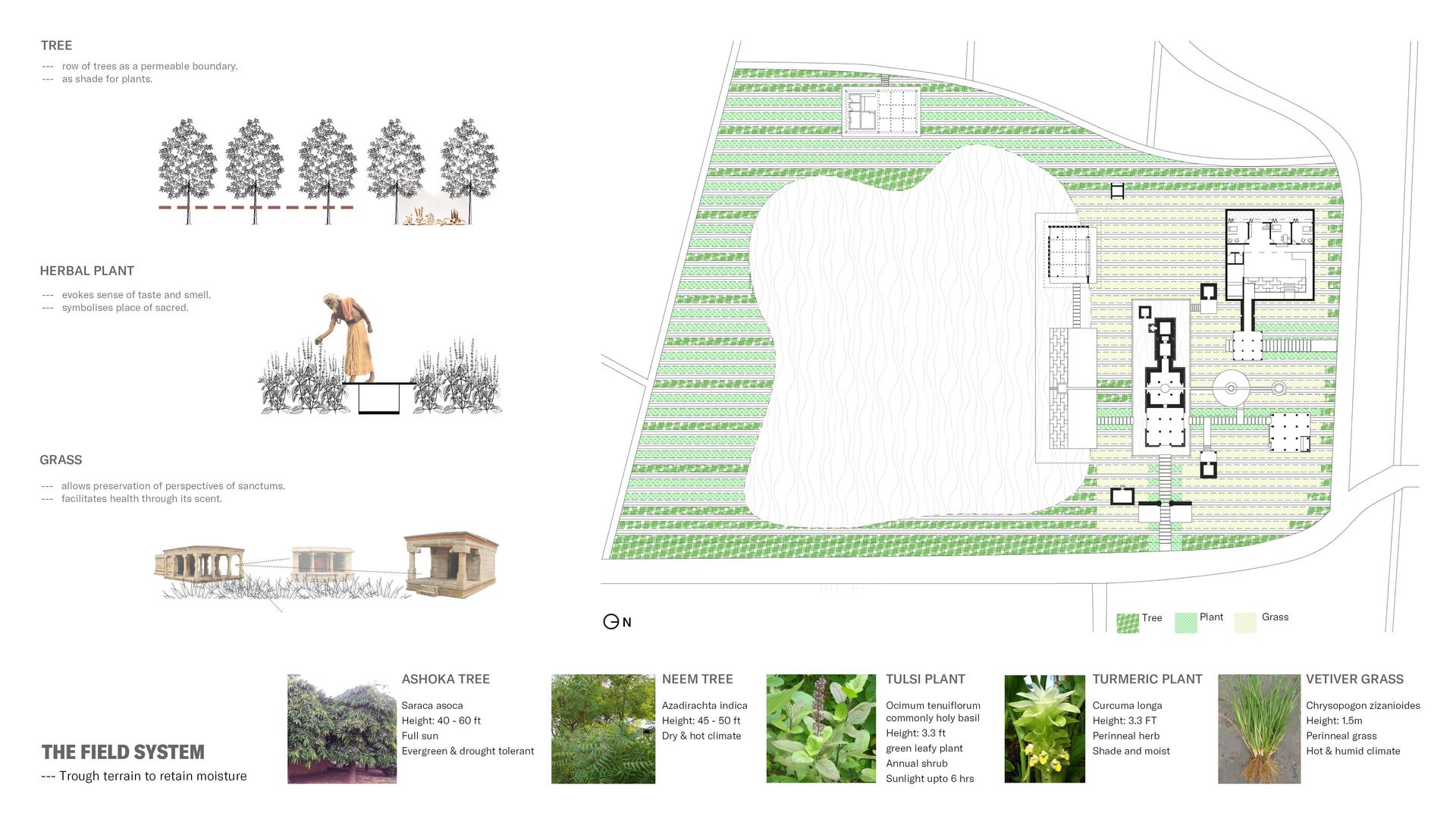
Image

Image
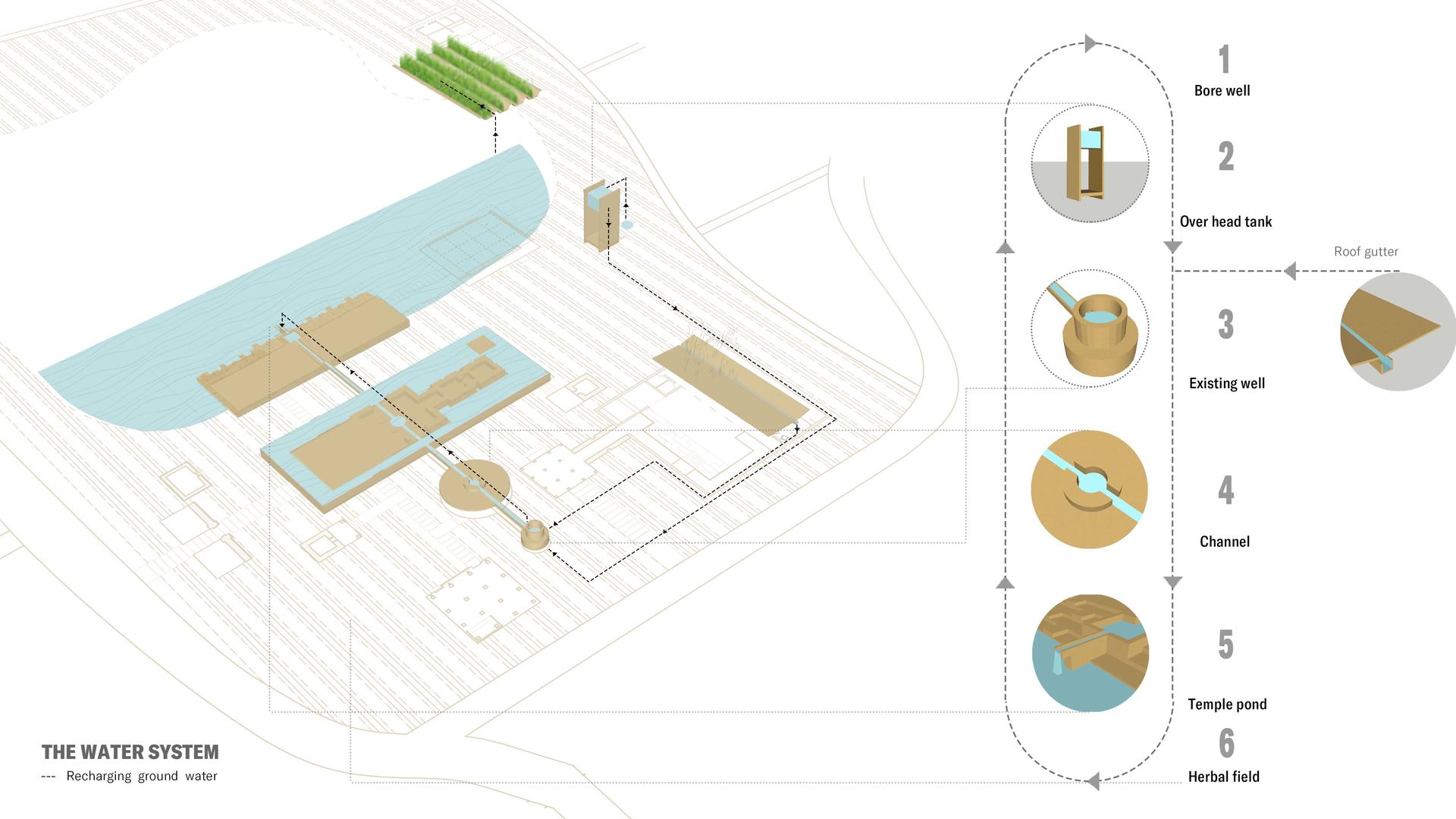
Image
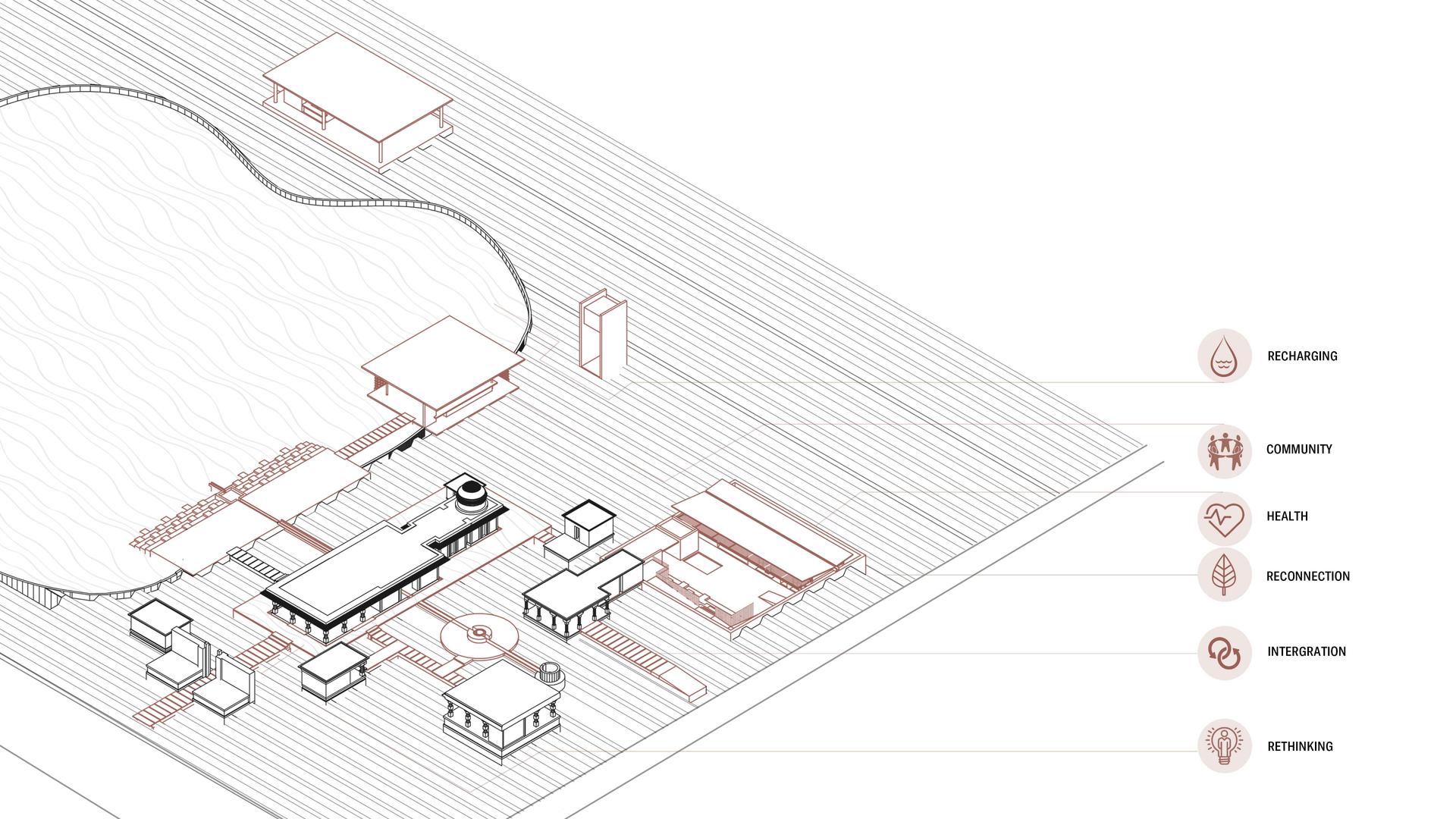
Image
